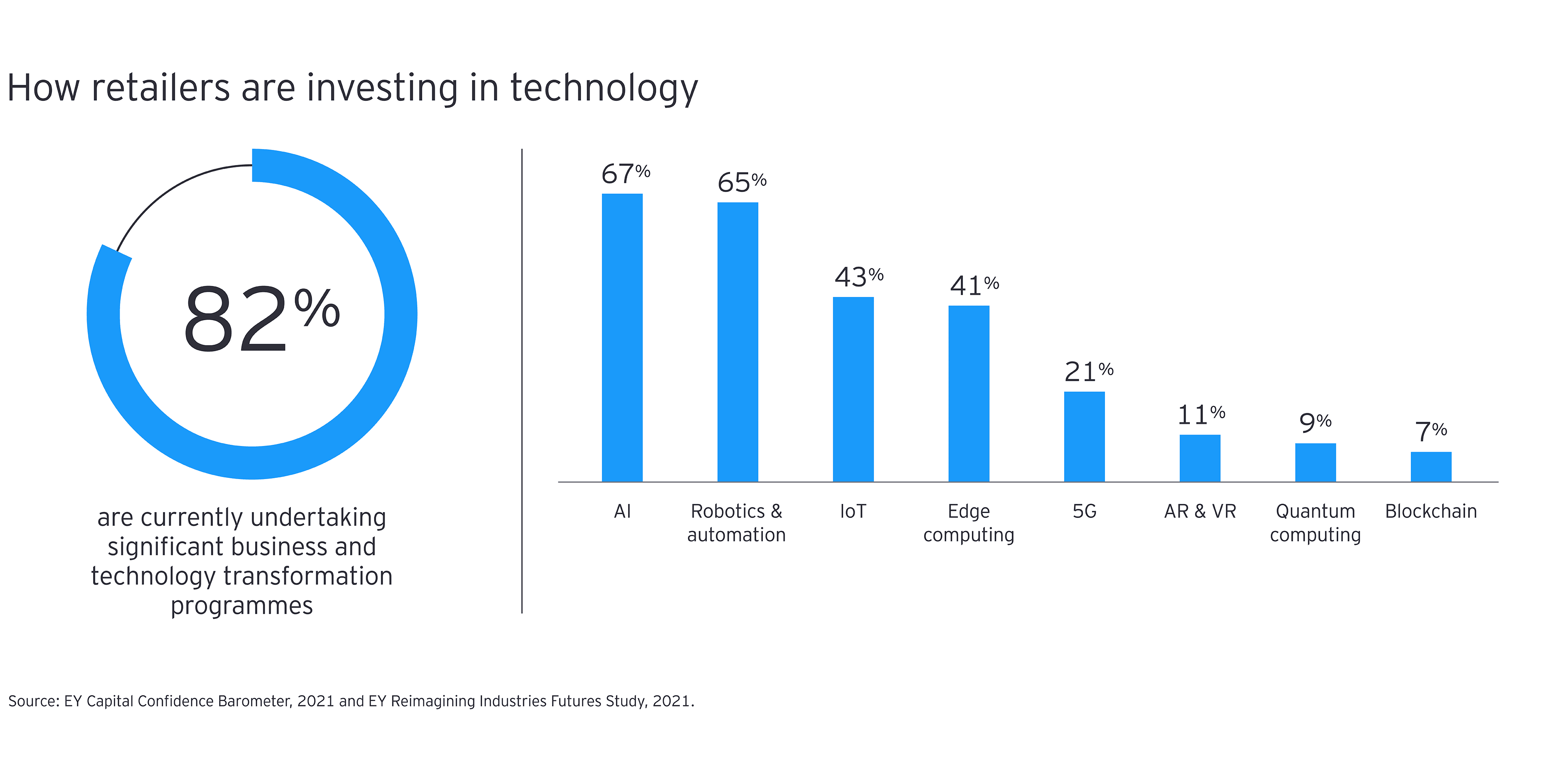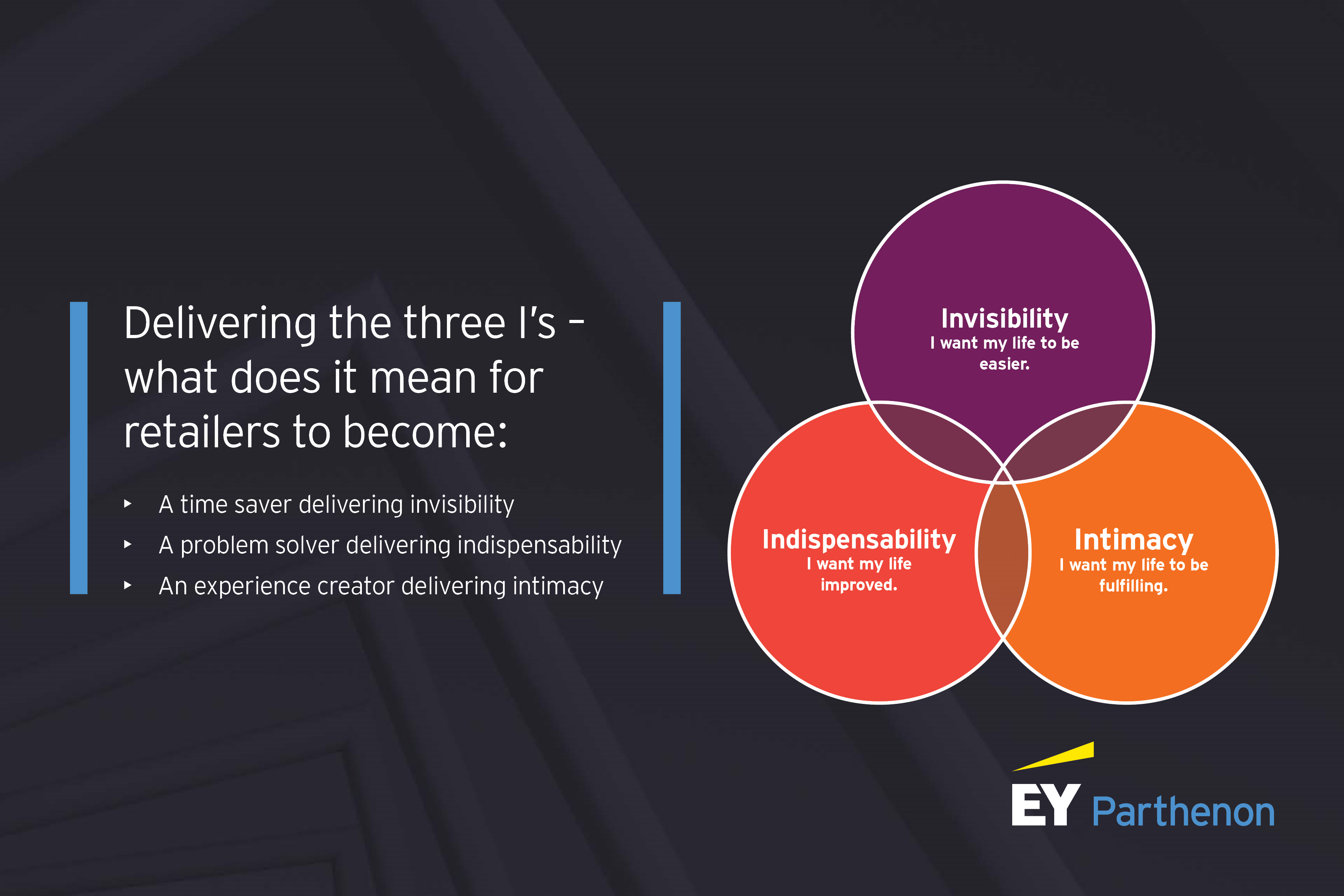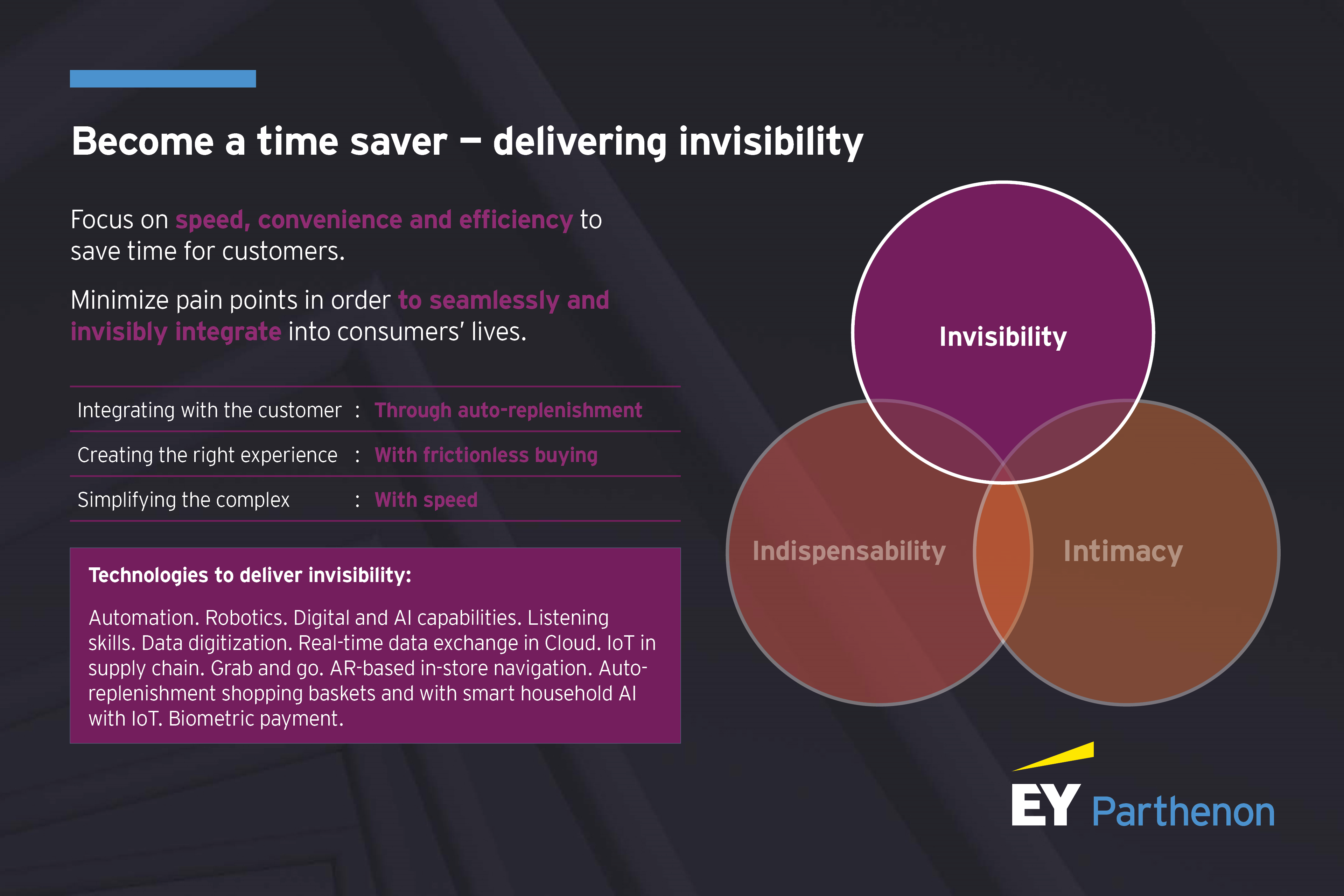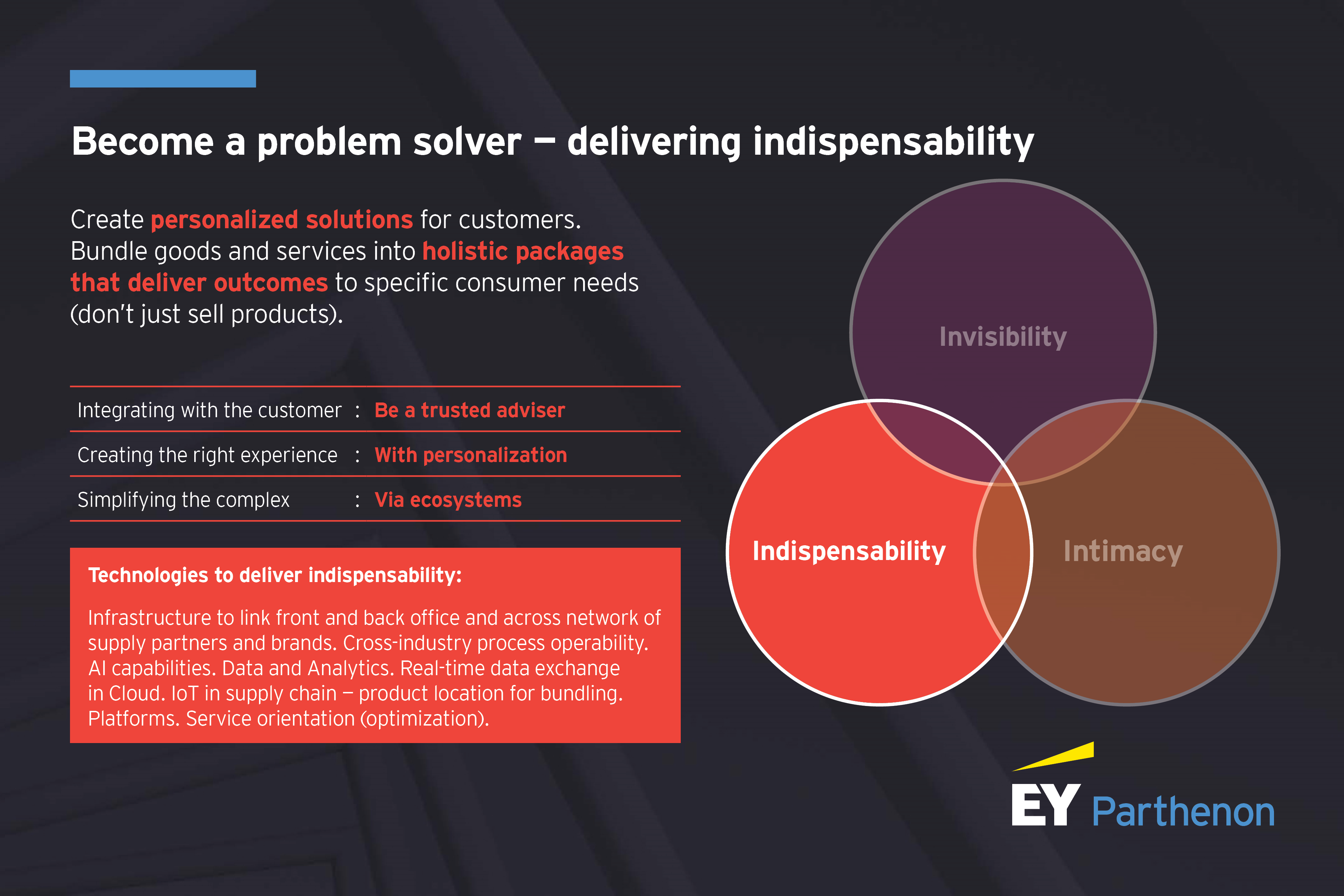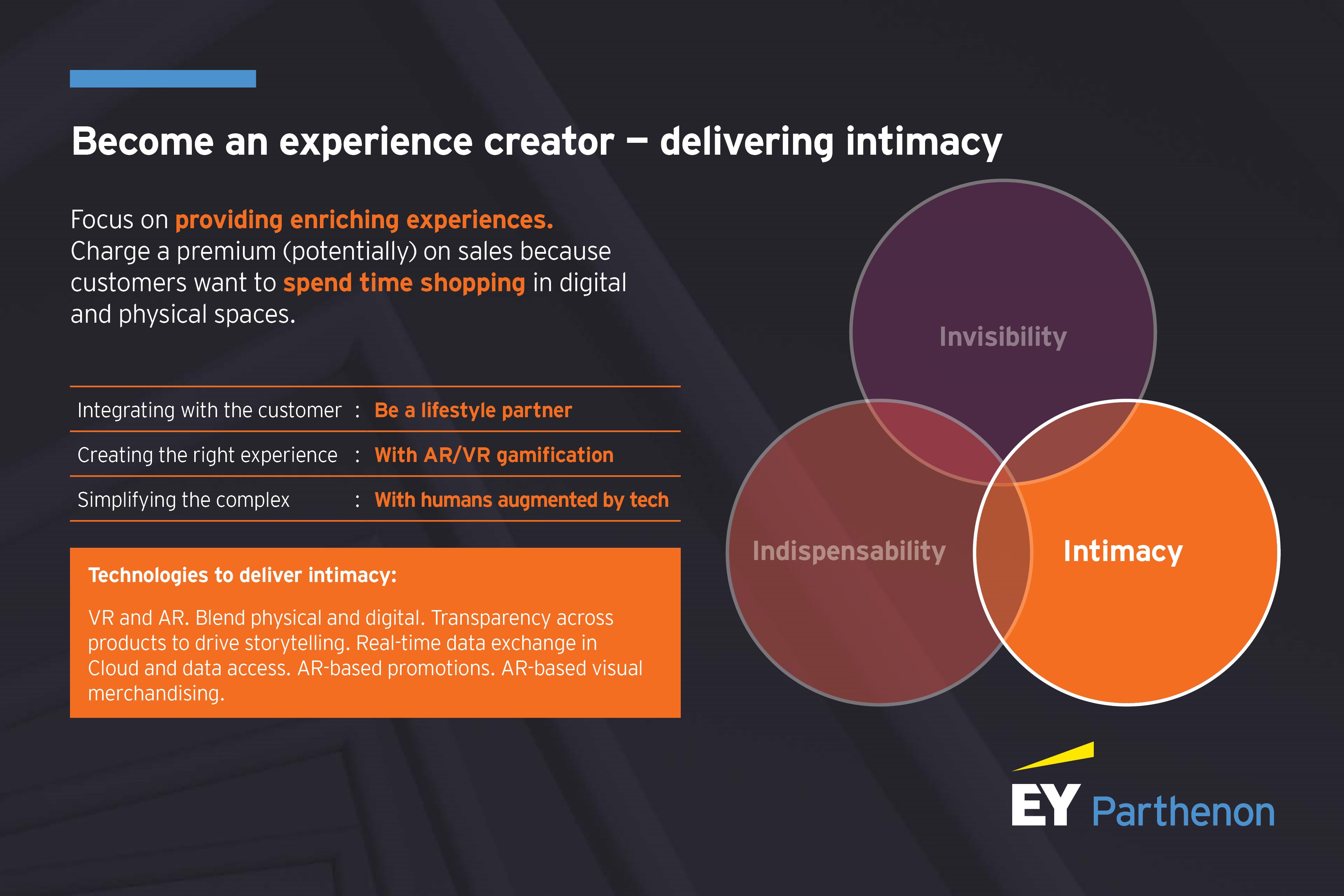Putting operational excellence at the service of the consumer
Achieving such operational excellence means that the customer gets every bit of value from the technologies and processes that a business uses (as well as the business). This shift in thinking from what the technology can do to how it can serve the consumer’s needs is all important.
If a retailer can command these technologies from within the core of the business to structure, organize, share and understand the data that customers generate, it can use those insights to invent new factor combinations that have not previously existed but are directly relevant to customer needs and aspirations. That may include, for instance, revitalizing bricks and mortar stores by integrating them with a wide range of human and digital capabilities – from advice bots, apps and store navigators, to self-checkout and virtual reality, staff curated experiences.
Focusing on what consumers value is critical to this process. We see three fundamental expectations: make my life easier, make it feel better, or make it more fulfilling. These create three areas of opportunity for a retailer to become an integrated part of the customer’s life: become invisible, become indispensable, or become an intimate part of their life experience (someone the customer wants to spend time with). In brief, that means a retailer needs to be able to provide time-saving convenience that the customer does not notice (invisibility); solve pressing problems, often by teaming up with other partners (indispensability); and create rewarding experiences that draw the retailer into a customer’s circle of trust (intimacy).
Even if each customer expectation tends to lean towards one opportunity for the retailer, every new service or product will be a blend of those three value propositions. Retailers must develop the right mix for their business as well as the right blend of model and formats to deliver them, based on their strengths and capabilities. Having the power and flexibility to create and manage such complexities is key to unlocking true customer integration.




